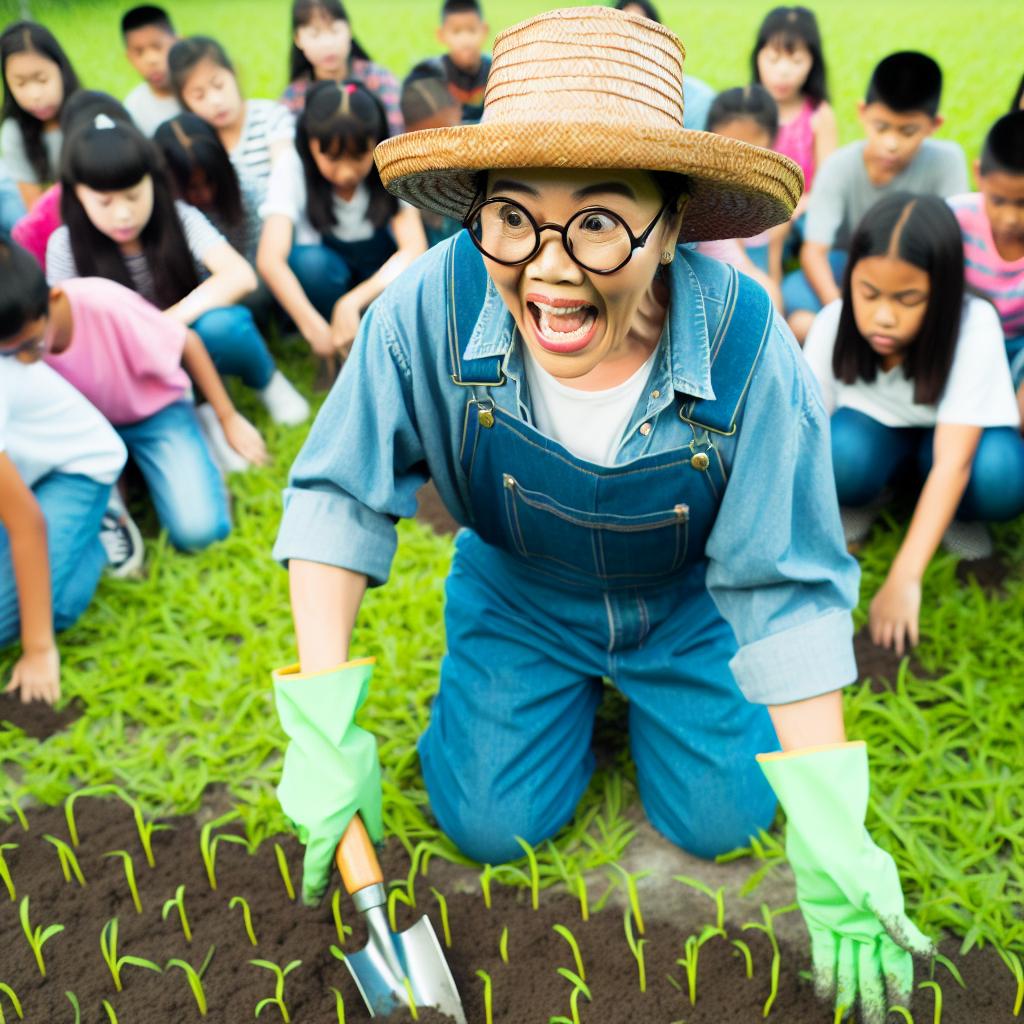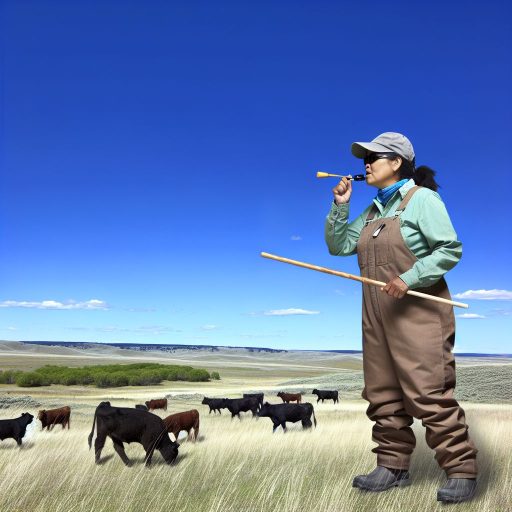Introduction:
Hands-on learning is crucial in agricultural education as it allows students to apply theoretical knowledge to real-life situations.
Engaging in practical activities like planting, harvesting, and caring for crops and livestock can significantly enhance students’ understanding of agricultural concepts.
Benefits of Hands-On Learning in Agricultural Education:
Improved Engagement and Motivation in Students:
Hands-on activities captivate students’ interest and make learning more enjoyable.
Active participation in activities enhances students’ understanding and retention of agricultural concepts.
Immersive experiences in agricultural settings foster a deeper connection to the subject matter.
Opportunities for Practical Application of Theoretical Knowledge:
Hands-on learning allows students to put theory into practice in real-world agricultural scenarios.
Students gain valuable skills by working directly with plants, animals, and equipment.
Practical experiences help solidify students’ comprehension of agricultural principles and techniques.
Development of Critical Thinking and Problem-Solving Skills:
Hands-on activities require students to think analytically and creatively to solve agricultural challenges.
By encountering obstacles in real-time, students learn to adapt and find solutions independently.
Engaging in hands-on tasks promotes a holistic understanding of agricultural processes and their complexities.
Hands-on learning plays a crucial role in agricultural education by offering numerous benefits to students.
From increased engagement and motivation to practical application of theoretical knowledge and the development of critical thinking skills, hands-on activities empower students to become more proficient in the field of agriculture.
Educators should strive to incorporate hands-on learning experiences into their curriculum to enhance students’ learning outcomes and prepare them for successful careers in agriculture.
Incorporating hands-on learning activities in the agricultural curriculum:
When it comes to agricultural education, incorporating hands-on learning activities is crucial for students to truly grasp the concepts and skills needed to succeed in this field.
By engaging students in interactive experiments, projects, field trips, farm visits, and virtual hands-on experiences, educators can create a rich and immersive learning environment that goes beyond traditional classroom instruction.
Designing interactive experiments and projects:
- Hands-on experiments and projects allow students to apply theoretical knowledge to practical situations, fostering a deeper understanding of agricultural concepts.
- Designing projects that simulate real-world scenarios can also help students prepare for future careers in agriculture.
Utilizing outdoor field trips and farm visits:
- Field trips and farm visits provide students with hands-on experience outside the classroom, allowing them to see agricultural practices in action.
- These experiences help students connect theory to practice, as they observe how concepts learned in class are applied in real-world settings.
Integrating technology tools for virtual hands-on experiences:
- Incorporating technology tools such as virtual simulations, online labs, and educational apps can enhance hands-on learning in agricultural education.
- Interactive virtual simulations can help students visualize agricultural processes, such as plant growth or irrigation systems, in a way that is interactive and engaging.
Overall, by incorporating hands-on learning activities into the agricultural curriculum, educators can create a dynamic and engaging learning environment that empowers students to develop essential skills and knowledge for success in the agriculture industry.
Find Out More: The Role of GIS in Modern Irrigation Practices
Examples of Hands-On Learning Activities in Agricultural Education:
Gardening and Crop Production Simulations:
Students can participate in planting, cultivating, and harvesting crops in a controlled environment.
They learn about soil types, irrigation methods, and pest control practices through hands-on experience.
Transform Your Career Today
Unlock a personalized career strategy that drives real results. Get tailored advice and a roadmap designed just for you.
Start NowUnderstanding the lifecycle of plants and the factors that affect their growth and productivity is crucial.
Livestock Care and Management Workshops:
Engaging in feeding, grooming, and housing animals helps students learn proper animal care techniques.
They study animal behavior, health monitoring, and vaccination protocols through practical sessions.
Identifying different breeds of livestock and their specific management requirements is essential.
Soil Testing and Analysis Labs:
Conducting soil tests helps determine nutrient levels, pH balance, and overall soil health.
Students learn how to interpret soil test results and make recommendations for improving soil fertility.
They gain hands-on experience with soil sampling techniques and using equipment for soil analysis.
Incorporating these hands-on learning activities into agricultural education programs enhances students’ understanding and appreciation for the industry.
By actively engaging in practical tasks, students develop valuable skills that will prepare them for future endeavors in agriculture.
Discover More: Mobile Marketing Strategies for Agricultural Products
Importance of Real-World Experiences in Agricultural Education
Experiential learning opportunities provide students with hands-on experiences to apply their theoretical knowledge in real-world agricultural settings.
This practical application enhances their understanding of concepts and allows them to see the direct impact of their learning.
- Collaboration with industry professionals and farmers is essential in providing students with practical insights into the agricultural industry.
- By working alongside experts in the field, students can gain valuable knowledge and skills that are directly applicable to their future careers.
- Real-world experiences also help students develop problem-solving skills, critical thinking abilities, and adaptability, all of which are crucial for success in the agricultural industry.
- By facing real-life challenges and working to find solutions, students can hone their abilities and become well-equipped for the demands of the field.
- Engaging in hands-on learning in agricultural education also fosters a deeper connection with the environment and promotes an appreciation for sustainable practices.
- By directly interacting with the land, animals, and crops, students gain a greater understanding of the importance of environmental stewardship and conservation in agriculture.
- Additionally, real-world experiences in agricultural education help to prepare students for future careers in the industry by giving them a taste of what working in the field actually entails.
- By experiencing the day-to-day realities of agricultural work, students can better determine if a career in agriculture is the right fit for them and can begin to develop the necessary skills and knowledge for success.
Incorporating hands-on learning experiences in agricultural education is essential for providing students with the practical skills, knowledge, and insights they need to succeed in the agricultural industry.
By engaging in experiential learning opportunities, students can gain a deeper understanding of agricultural concepts, develop valuable skills, and prepare for fulfilling careers in the field.
Find Out More: Impact of Climate Change on Pest Control Advisory

Evaluation and assessment of hands-on learning in agricultural education:
Hands-on learning in agricultural education offers a unique opportunity for students to gain practical skills and knowledge.
However, assessing the effectiveness of hands-on learning activities is crucial to ensure that students are meeting learning objectives and gaining valuable experiences.
Use of rubrics and performance-based assessments:
- Rubrics provide a clear and objective way to assess students’ performance in hands-on activities.
- By using rubrics, educators can evaluate different aspects of students’ work, such as technical skills, problem-solving abilities, and communication skills.
- Performance-based assessments allow students to demonstrate their understanding of concepts and apply their knowledge in real-world scenarios.
- Through performance-based assessments, educators can measure students’ ability to perform tasks accurately and efficiently.
Reflection activities for students to analyze their learning:
- Reflection activities provide students with an opportunity to think critically about their hands-on learning experiences.
- By reflecting on their work, students can identify areas of strength and areas for improvement.
- Reflective activities also encourage students to consider how their learning in agricultural education connects to other areas of their academic and personal lives.
- Through reflection, students can develop a deeper understanding of the value of hands-on learning in agricultural education.
Continuous improvement through feedback from students and educators:
- Feedback from students is essential for educators to assess the effectiveness of hands-on learning activities.
- By soliciting feedback from students, educators can gain insights into what aspects of hands-on learning are most valuable to students.
- Feedback from educators allows students to understand how they can improve their skills and knowledge in agricultural education.
- Continuous improvement based on feedback ensures that hands-on learning activities are engaging, relevant, and effective for students.
Evaluation and assessment of hands-on learning in agricultural education are essential for measuring the effectiveness of these activities and ensuring that students are gaining meaningful experiences and skills.
By using rubrics, performance-based assessments, reflection activities, and feedback from students and educators, educators can enhance the impact of hands-on learning in agricultural education and provide students with valuable learning opportunities.
Showcase Your Business Today
Reach thousands of readers actively exploring professional services. Publish your business profile and grow your audience now.
Publish NowLearn More: How Agricultural Consultants Influence Agribusinesses
Benefits of Hands-On Learning in Agriculture
Hands-on learning in agricultural education offers numerous benefits.
Students gain practical skills that are directly applicable to their future careers.
This method enhances engagement and retention of knowledge.
Moreover, it cultivates problem-solving skills essential in farming.
Educators should strive to incorporate more interactive experiences.
Practical experiences can make learning more relatable and enjoyable.
By focusing on real-world applications, educators can inspire students.
Effective teaching methods can significantly influence students’ career choices.
Ultimately, enhancing agricultural education can lead to a more skilled workforce.
Additional Resources
About Us | Agricultural Education, Technology & Innovation
Resources For Educators and Community Leaders | Home
[E-Books for Sale]
The Big Book of 500 High-Paying Jobs in America: Unlock Your Earning Potential
$19.99 • 500 High-Paying Jobs • 330 pages
Explore 500 high-paying jobs in America and learn how to boost your career, earn more, and achieve success!
See All 500 High-Paying Jobs of this E-Book
1001 Professions Without a Degree: High-Paying American Jobs You Can Start Now
$19.99 • 1001 Professions Without a Degree • 174 pages
Discover 1001 high-paying jobs without a degree! Unlock career tips, skills, and success strategies for just $19.99!




